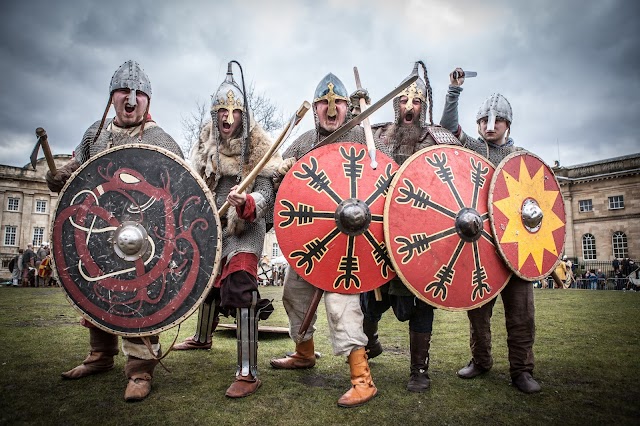Blood is a life-giving fluid that transports oxygen to body cells. It is a special type of connective tissue composed of red blood cells, platelets and white blood cells suspended in a liquid plasma matrix.
These are basic knowledge, but there are many surprising facts; for example, blood accounts for about 8% of body weight and contains trace amounts of gold. Are you curious? Please read the more interesting facts below.
Not all blood is red
Although humans have red blood, other organisms have blood of different colors. Crustaceans, spiders, squids, octopuses and some arthropods all have blue blood. Certain types of worms and leeches have green blood. A few types of marine worms have violet blood. Insects, including beetles and butterflies, have colorless or yellowish blood. The color of blood is determined by the type of respiratory pigment used to transport oxygen to the cells through the circulatory system. Human respiratory color is a protein called hemoglobin found in red platelets.
Your body contains a lot of blood
An adult contains approximately 1.325 gallons of blood. Blood accounts for 7% to 8% of a person's total weight.
Blood is mainly composed of plasma
Circulating blood is composed of approximately 55% plasma, 40% red blood cells, 4% platelets and 1% white blood cells. Among the white blood cells circulating in the blood, neutrophils are the most abundant.
White blood cells are essential for pregnancy
It is notable that white platelets are significant for a sound invulnerable framework. What is less known is that sure white platelets called macrophages are essential for pregnancy to happen. Macrophages are ubiquitous in reproductive system tissues. Macrophages contribute to the development of the vascular network in the ovary, which is essential for the production of the hormone progesterone. Progesterone plays a key role in embryo implantation in the uterus. The low number of macrophages leads to reduced progesterone levels and insufficient embryo implantation.
You have gold in your blood
Human blood contains metal iotas, including iron, chromium, manganese, zinc, lead and copper. You may also be surprised to know that blood contains a small amount of gold. The human body has about 0.2 mg of gold, mainly in the blood.
Blood cells come from stem cells
In people, all platelets come from hematopoietic undeveloped cells. Approximately 95% of human blood cells are produced in the bone marrow. In adults, most of the bone marrow is concentrated in the sternum and bones of the spine and pelvis. Several other organs help regulate the production of blood cells. These include the liver and lymphatic system structures such as lymph nodes, spleen and thymus.
Blood cells have different life spans
Mature human blood cells have different life cycles. Red blood cells circulate in the body for about 4 months, platelets for about 9 days, and white blood cells range from a few hours to a few days.
Red blood cells have no nucleus
The main function of red blood cells (red blood cells) is to distribute oxygen to body tissues and carry waste carbon dioxide back to the lungs. Red blood cells are biconcave, providing them with a large gas exchange surface area and high elasticity, allowing them to pass through narrow capillaries. Unlike other types of cells in the body, mature red blood cells do not contain nuclei, mitochondria or ribosomes. The lack of these cellular structures leaves room for the hundreds of millions of hemoglobin molecules found in red blood cells.
Blood protein prevents carbon monoxide poisoning
Carbon monoxide (CO) gas is colorless, odorless, tasteless and toxic. It is not only produced by fuel burning devices, but also as a by-product of cellular processes. If carbon monoxide is naturally produced during normal cell function, why can organisms not be poisoned? Since the concentration of CO produced is much lower than that of CO poisoning, it can protect cells from its toxic effects. CO binds to a protein called heme protein in the body. The blood found in mitochondria and the hemoglobin found in cytochromes are examples of heme protein. When CO binds to the red blood cells of hemoglobin, it prevents oxygen from binding to protein molecules causing interruption in important cellular processes such as cellular respiration. At low CO concentrations, hemoglobin changes its structure, preventing CO from successfully binding them. If there is no such structural change, the degree of CO binding to heme protein is as high as one million times.
Capillaries spit out blockages in the blood
The thin walls of capillaries allow dissolved blood gas and nutrients to diffuse in and out of body tissues. Capillaries can expel obstructive debris. These fragments may consist of cholesterol, calcium spots or clots in the blood.
Ultraviolet rays can lower blood pressure
Exposing a person's skin to the sun can lower blood pressure by raising the level of nitric oxide in the blood. Nitric oxide helps regulate blood pressure by reducing blood vessel tone. Lower blood pressure can reduce the risk of heart disease or stroke. Although prolonged exposure to the sun may cause skin cancer, scientists believe that proper exposure to the sun will reduce the risk of cardiovascular disease and related diseases.
In the United States most well-known blood classification is O+
The least common is AB negative. The distribution of blood types varies by race.







0 Comments